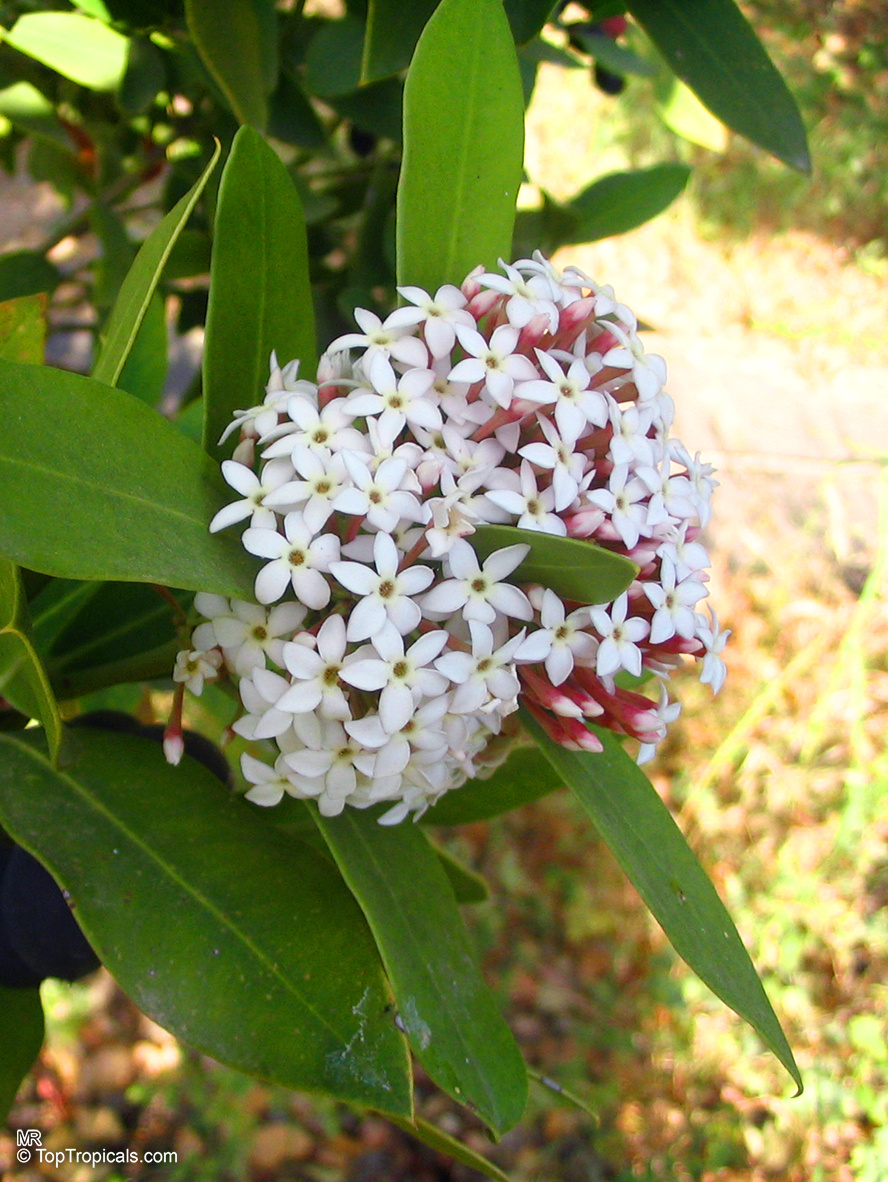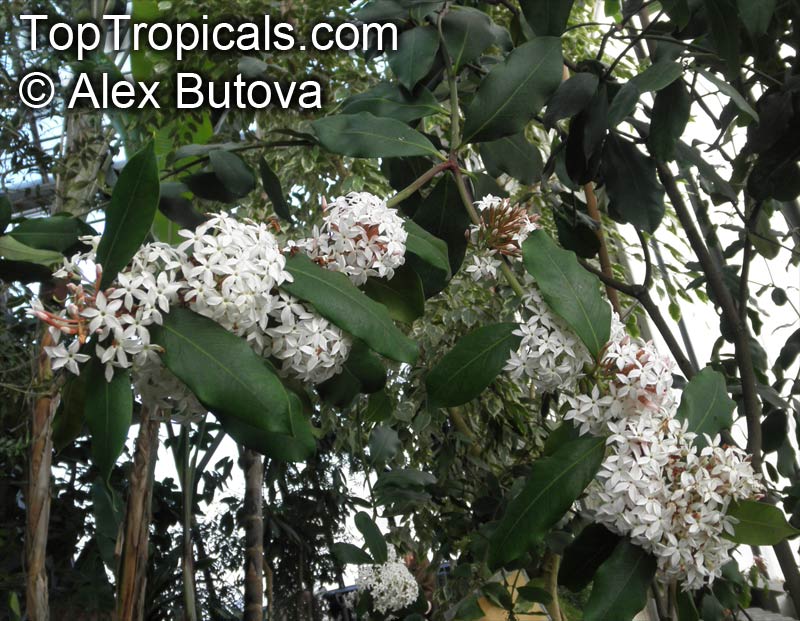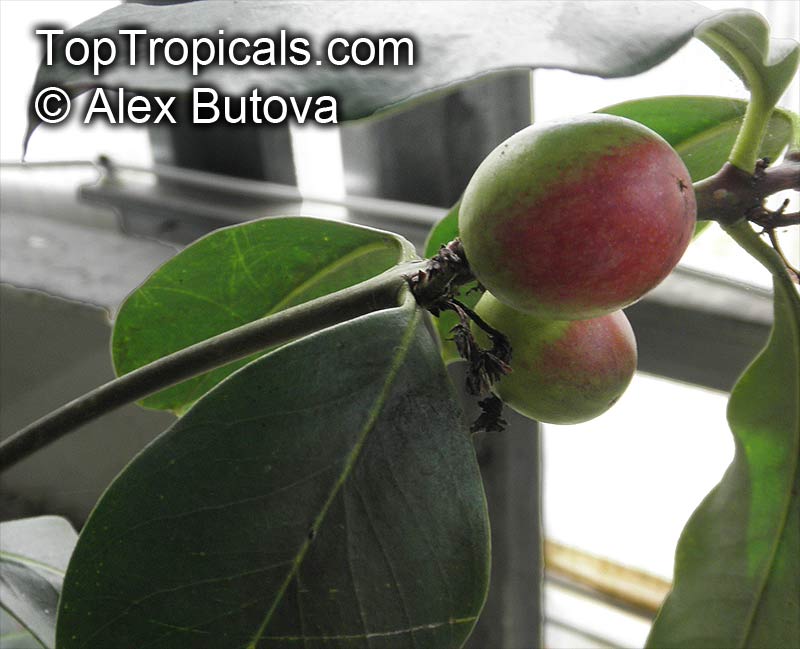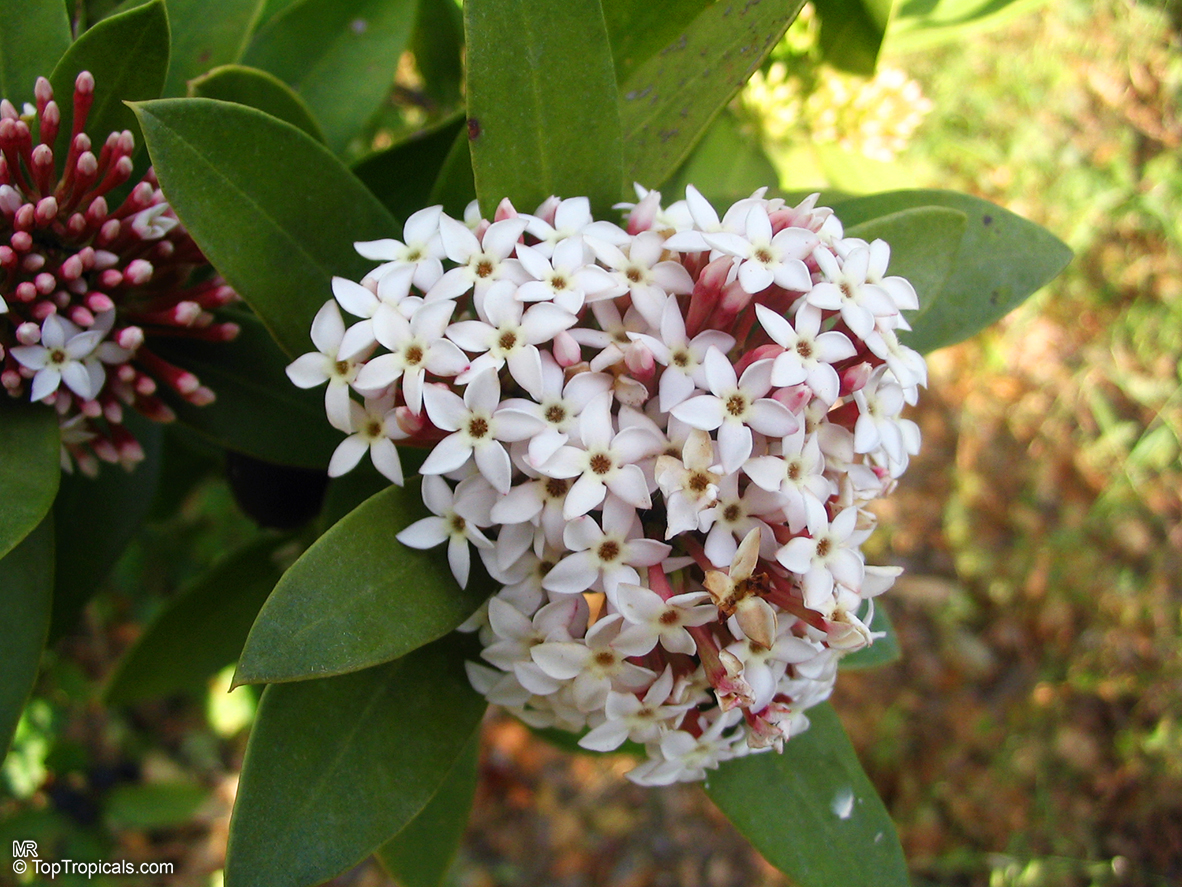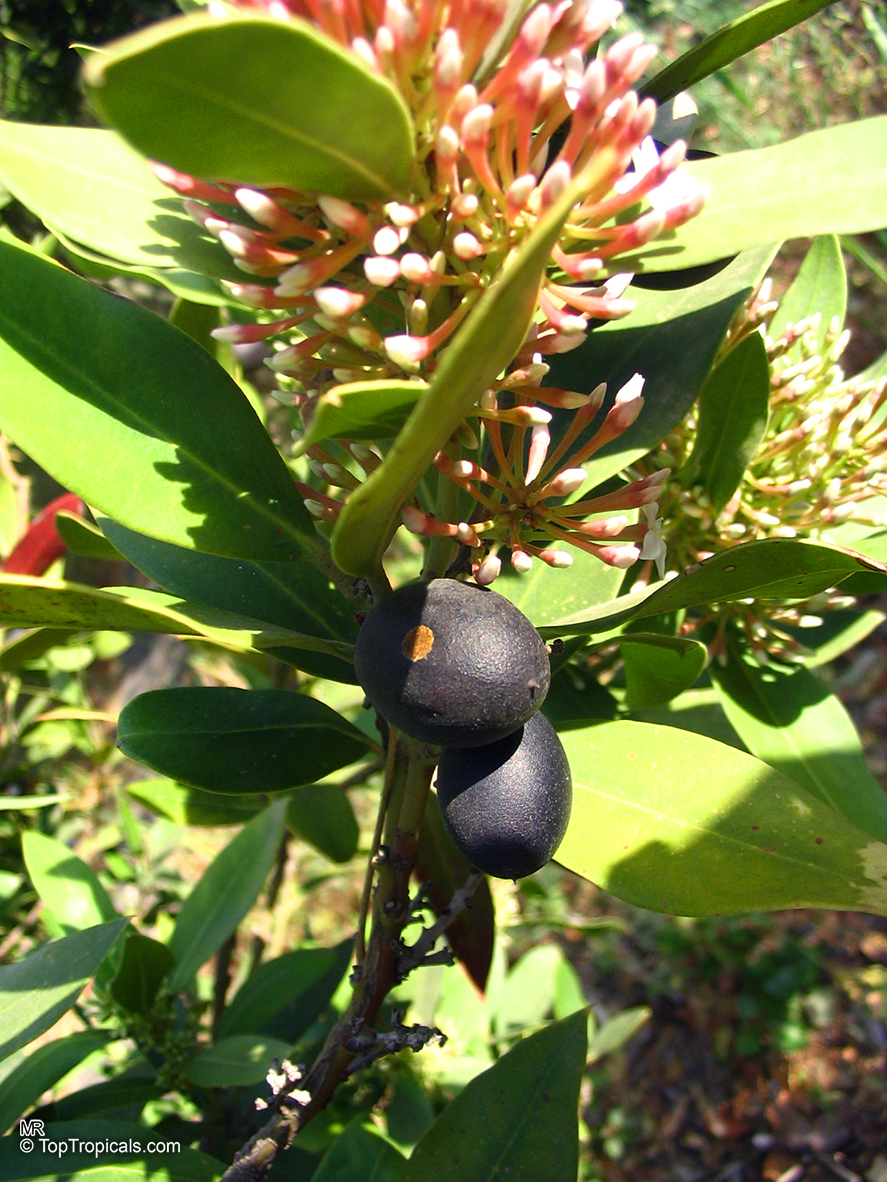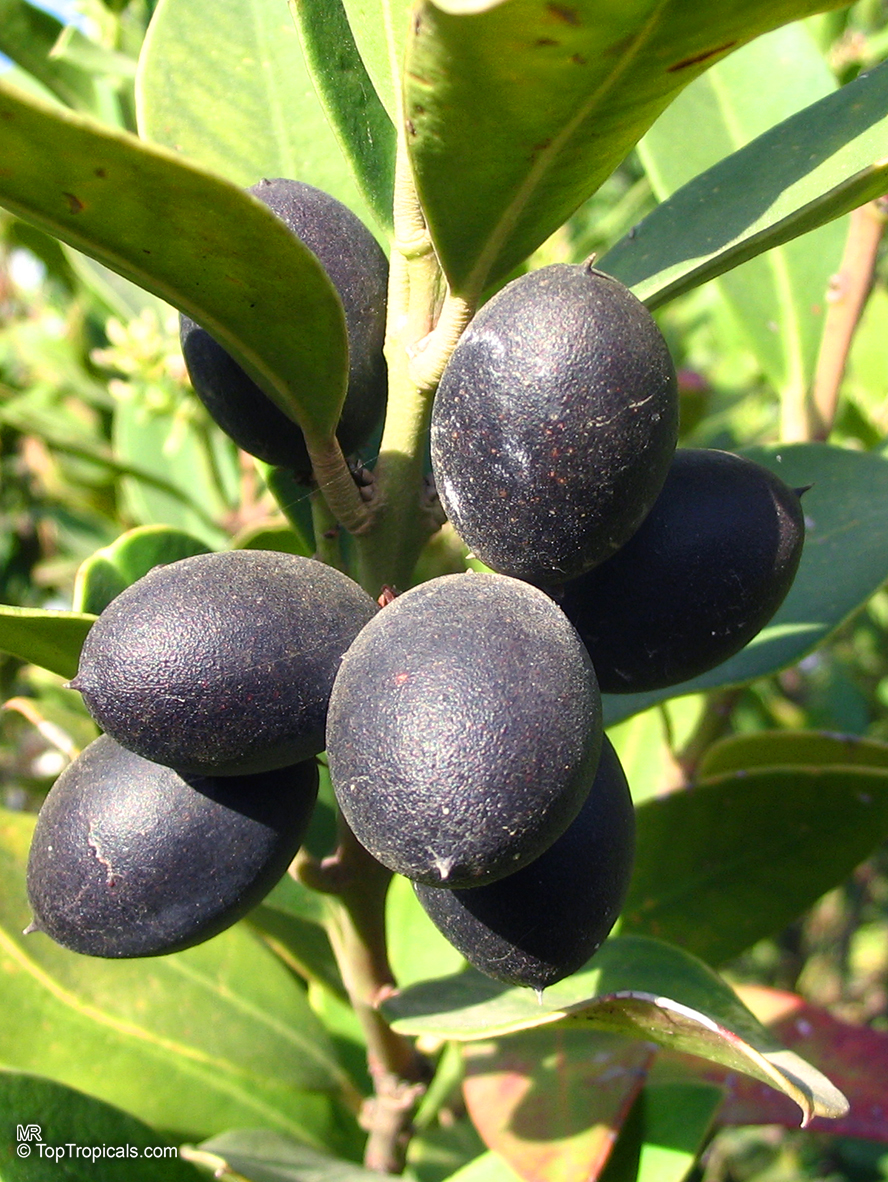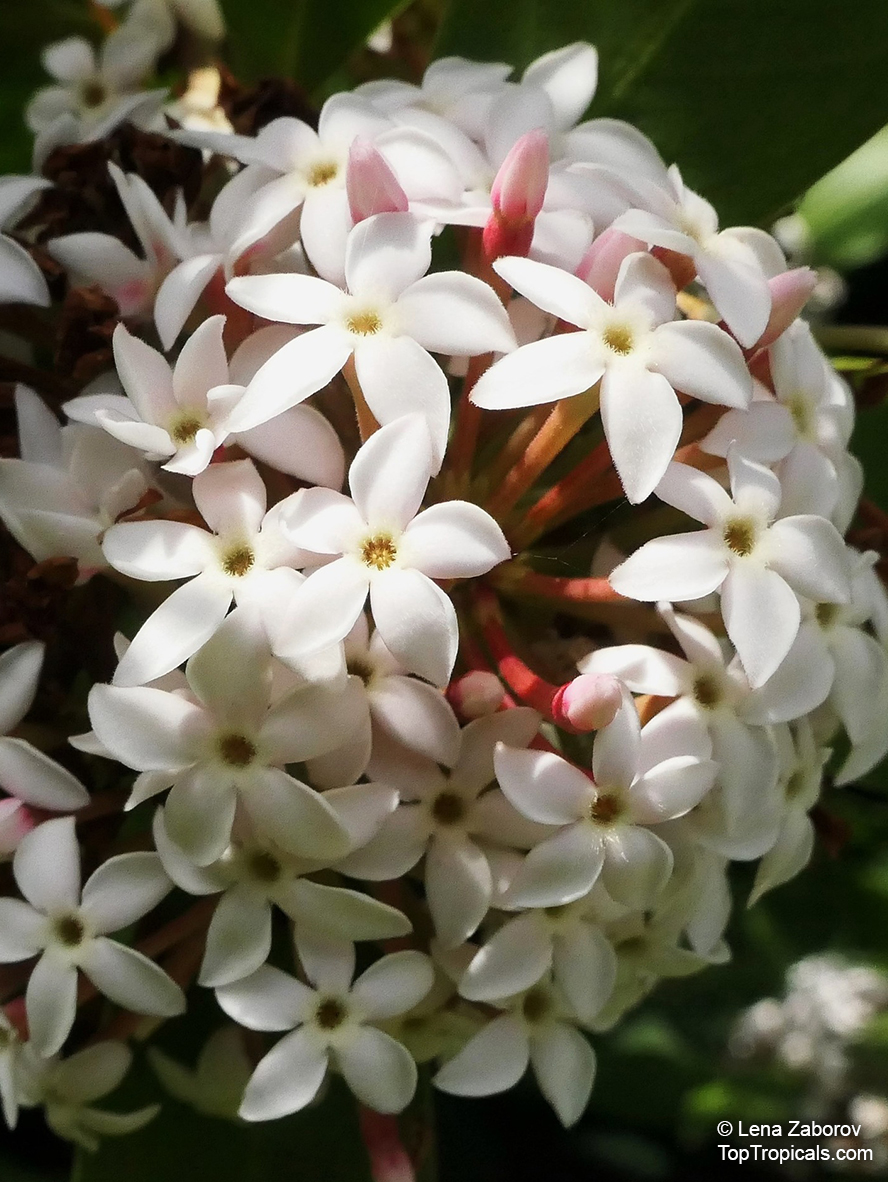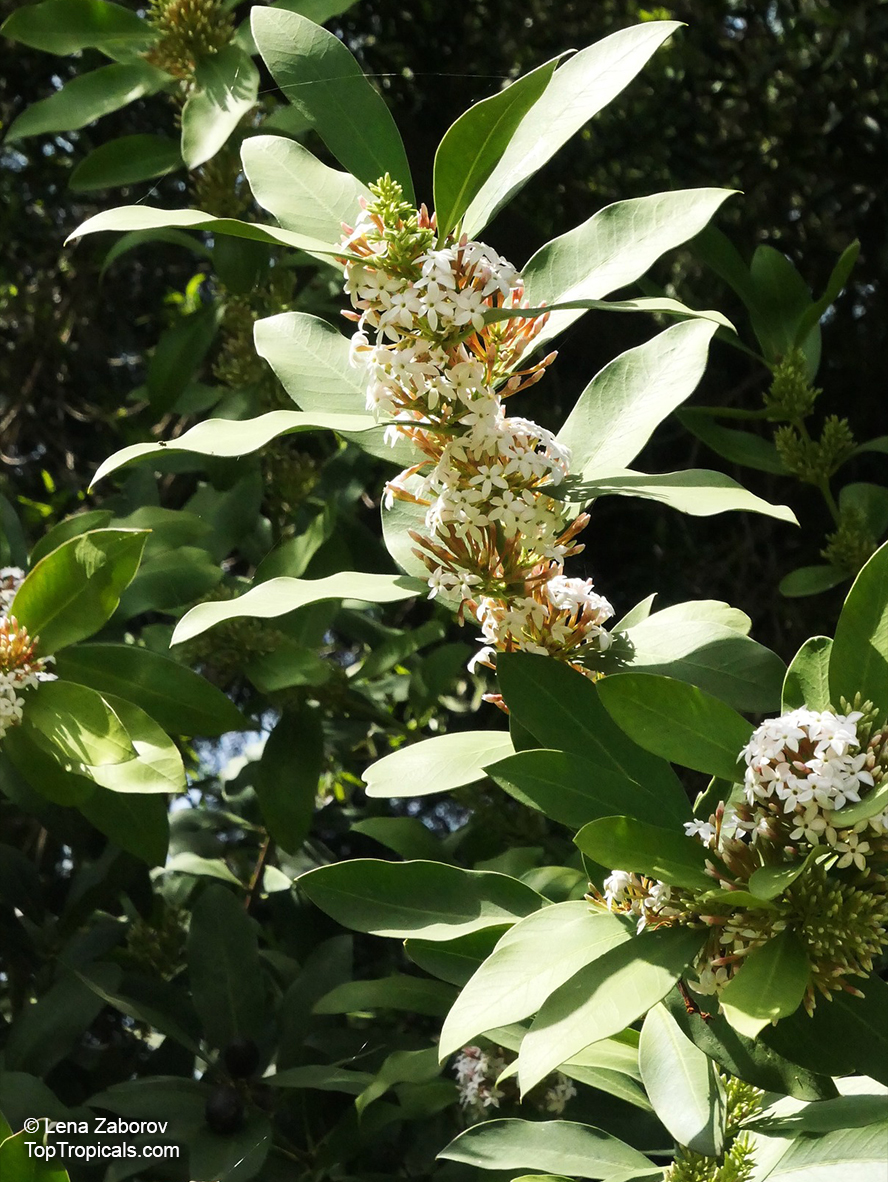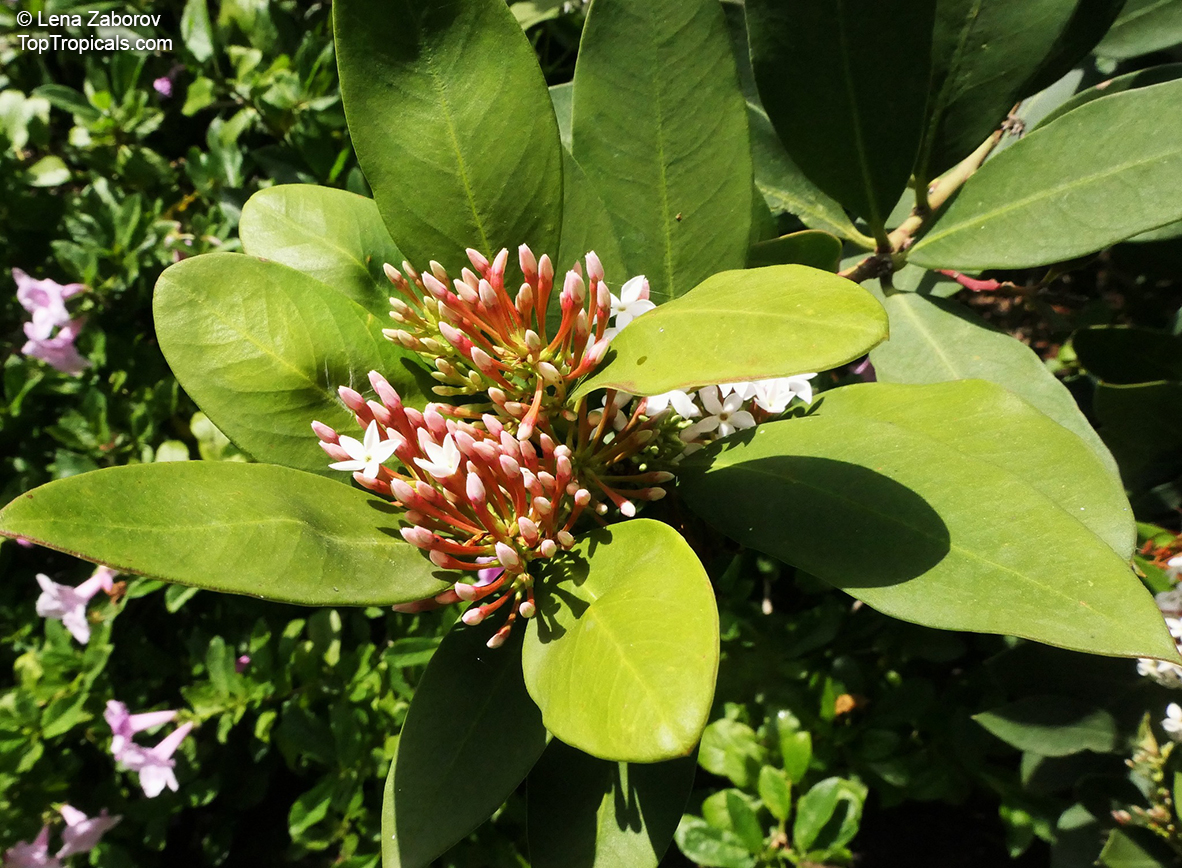Acokanthera oppositifolia (Bushman's Poison)
Top Tropicals Plant Encyclopedia
Botanical name: Acokanthera oppositifolia
Common name: Bushman's Poison
Family: Apocynaceae
Origin: South Africa








Acokanthera oppositifolia (Bushman's Poison) is a large shrub, typically growing 5-10 feet tall. It has glossy dark green leaves that are opposite and grow up to 3-4 inches long. In the spring and summer months, the Bushman's Poison flowering shrub is adorned with white, off-white flowers which have a strong, sweet, perfume-like scent.
In its native habitat, the Acokanthera oppositifolia is mainly used for its ethnomedical applications, such as treatment for headaches, inflammations, fever and even malaria. However, it should be noted that the milky sap is considered to be poisonous or toxic and should not be ingested.
As an ornamental plant, the Bushman's Poison works well in well-drained soil in full sun or partial shade and requires moderate amounts of water. It is suitable for growing in regions with USDA Hardiness Zones 9-11 and a mature plant can tolerate short periods of time in temperatures as low as 30°F. When growing in a pot, it is advisable to move the container to a protected area during cold winters and to protect the roots from the frost.
